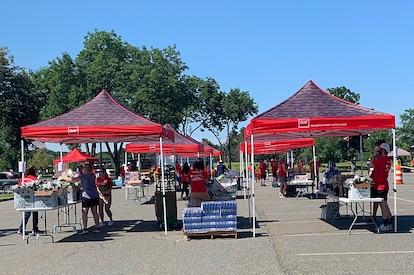
Residential Roofing
Life After COVID-19: How to Resume Your Business and Safely Get Back to Work
Many states are beginning to fully or partially reopen after COVID-19 brought the economy to a halt. However, if you're ready to get back to work and begin serving customers again, there are several guidelines you need to consider to keep yourself, your employees, and your customers safe.Here are some suggestions for how to resume business as safely and productively as possible:Reconnect with Customers and ProspectsOne of the first things you can do to restart your business is reach out to former leads who put their projects on hold during the pandemic.Many customers may still be hesitant about moving forward, but you can try to reassure them by sharing your company's COVID-19 safety policies. Detail the strategies you'll follow to limit face-to-face interactions and potential exposure, such as handling all customer communications virtually.You can also incentivize prospects by offering a special for new customers, such as a discount for certain types of projects. It might feel challenging to offer discounts if your company lost business during the shutdown, but providing some type of customer incentive could help to fill up your sales pipeline.For previous buyers, you may want to consider adding a service and maintenance division or begin selling other verticals such as gutters, windows and siding to re-engage satisfied customers who have already experienced your work.Prioritize ProjectsSince construction is considered an essential business in many states, you may have continued working on certain roofing projects during the shutdown. However, now that the economy is beginning to reopen, you may have customers anxious to get started on projects they had put on hold—on top of the urgent repairs or replacements you already had in the pipeline.Consider several approaches to prioritizing new or backlogged projects. First, you could prioritize customers' needs based on project requirements and deadlines. For example, if a homeowner has had major roof damage and needs to be back in their home by a certain date, you might want to start on that project first.The project's budget is also an important consideration, especially if cash flow is an issue for your business. If a customer has a large project with a big budget, it may be good to get started on that project sooner rather than later.In addition, staffing and resources might dictate which projects you can tackle. You may have had employees who fell sick and are recovering or employees who have moved onto other jobs after work slowed down at your company. Limited manpower could prevent you from taking on certain projects right away, so you may have to focus on smaller or fewer roofing jobs to start. Consider all these factors when you're deciding which projects to prioritize.Keep Employees and Customers SafeEmployee and customer safety are two of the biggest considerations to think through when it comes to resuming work after COVID-19.Many states have provided safety guidelines for the construction industry, including ensuring employees at job sites wash their hands for at least 20 seconds with soap and water, or use hand sanitizer with at least 60% ethanol or 70% isopropanol before leaving the site if handwashing isn't possible.You should make sure employees practice social distancing both inside the office and on job sites. When and where it makes sense, you may want to allow employees to work from home. Paperwork and phone calls can all be handled virtually, so there's not a strong a need for administrative staff to be in the office all the time.On job sites, workers should always wear masks and avoid handshaking and close personal contact as much as possible. They also should limit face-to-face meetings with customers and instead opt for virtual meetings using applications like Facetime, Google Hangouts, Skype, or Zoom. GAF offers several digital tools, like GAF QuickMeasure and GAF e360, to help you remotely take measurements and build 3D renderings from smartphone photos. Use these tools to your advantage to maintain employee and customer safety.Getting Back to BusinessEven though states are beginning to reopen, the health risks of COVID-19 haven't disappeared. It's more important than ever that your business takes steps to protect employees and customers, even while you try to deliver the best service possible.If you are ready to get back to work, visit your state or local health department's website for more specific guidance about how to safely resume business operations. Using these resources can put you in the best position to safely and successfully run your business during this challenging time and help your company adjust to this new normal.
By Authors Satta Sarmah Hightower
November 30, 2021



